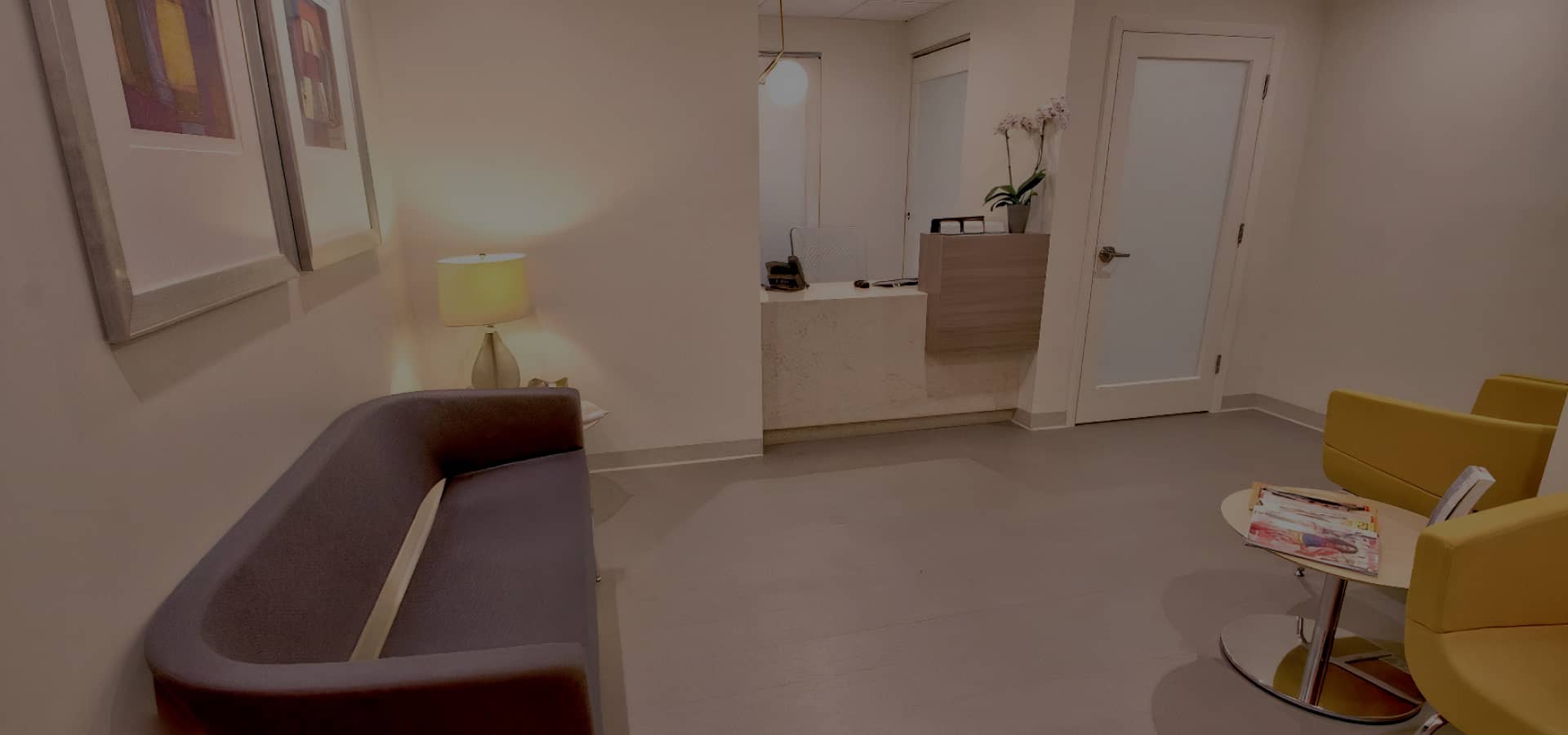Botox injections are primarily used to reduce the appearance of wrinkles, but they can have effects beyond cosmetic improvement, including potential impact on your vision. Understanding what may occur after you get these injections can help you manage expectations and recognize when to consult a healthcare provider.
Expert Dr. Anthony Bared provides important information about the effects that Botox may have on your vision. Our conversation will explore both the immediate and long-term visual side effects when to reach out to a medical professional, and how to increase the likelihood of a satisfactory outcome from your Botox treatments.
Botox and Your Eyesight Concerns
- Botox injections near the eyes may temporarily lead to vision problems, such as blurriness or double vision.
- Most vision issues after Botox are mild and resolve on their own without additional treatment.
- If vision changes occur after Botox, it’s important to contact the healthcare provider who performed the procedure.
- To minimize the risk of vision side effects, choose an experienced practitioner for Botox treatments.
- Understanding the possible side effects of Botox can prepare you for what to expect and when to seek medical advice.
Botox and Vision: Initial Impact Post-Treatment
After Botox injections targeted at relaxing muscle tension, some patients may encounter temporary vision alterations. Specifically, the toxin injection could unintentionally involve the eye muscles, leading to cases of a droopy eyelid or blurred vision. These are generally mild effects and tend to resolve on their own. However, it is essential for patients to report such occurrences to their doctors for proper monitoring. The majority of these symptoms are short-lived and do not indicate long-term issues. Here are possible changes:
- Minor weakening of the eye muscles
- Brief variations in vision sharpness
- A droopy eyelid after treatment
Patients need to be aware of these potential immediate reactions to anticipate the recovery process post-Botox treatments. Should any vision changes continue, reaching out to healthcare providers is crucial.
Botox and Long-Term Vision Effects: What You Might Experience
Botox injections are best known for their cosmetic injections, but their impact on muscle function can also have unintended consequences. The orbicular muscle is essential for controlling eye movement, and it might be affected during a Botox procedure. Muscle weakness in this area can lead to changes in facial expressions and might influence vision.
Months after injections, some individuals may notice vision problems like double vision. This condition generally comes from uneven muscle contractions around the eye, an after-effect of Botox’s muscle-relaxing abilities. It’s essential to know the type of Botox and the muscles it targets to reduce these risks.
Should you observe any vision changes after the treatment, contact your doctor. Swift medical attention can more effectively manage these side effects, prioritizing your ocular health.
Potential Vision Changes Following Botox: Understanding the Anatomy
Botox injections are widely used for both cosmetic treatments and neurological conditions. They work by keeping facial muscles, like those in the forehead, relaxed. This can help smooth skin and reduce wrinkles. However, there may be effects on vision if the substance affects the muscles or nerves linked to the eyes.
Botox might impact the muscles controlling eyelid movement, potentially leading to temporary eyelid spasms. It’s important for patients with neurological conditions to understand that Botox targets nerve signals and muscle function that are vital for eye health. While the treatment benefits the skin, one should be alert to any vision changes, since the health of the eyes is closely connected to the condition of nearby muscles and nerves.
Botox and Vision Side Effects: Examining Clinical Evidence
Clinical trials indicate that Botox can lead to vision-related side effects. A notable issue includes a drooping eyelid when the injection affects the contracting muscle above the eye.
Blind people might report differences in how they experience these side effects, with alterations in their sensory perception.
Noteworthy side effects associated with the treatment include:
- Eye pain linked to the prescribed injection
- Challenges in focusing due to effects on muscle contracts necessary for eye focus
Awareness of these risks is critical for anyone considering Botox. Injection sites and potential side effects should be discussed before undergoing treatment.
After Botox: Normal Sensations vs. Vision Concerns
After receiving Botox near the glabellar muscles, people should note the difference between expected sensations and vision issues. Usual effects can include tightness or slight swelling at the injection sites, which are part of the process as the Botox takes effect.
Yet, eyelid ptosis, a condition leading to drooping eyelids, is a concerning symptom that could impact vision. Swift action is imperative if this occurs. While the goal of a cosmetic procedure like Botox is to achieve healthier skin and a more youthful look through softening frown lines, alertness is key when any serious changes in eye function are experienced. If such symptoms arise, seek professional help right away.
- Minor swelling
- Tightness at injection sites
Vision Concerns:
- Eyelid ptosis
- Altered vision
Acid injections offered as an effective treatment must be monitored for symptoms to secure safety and success.
Botox Injection Precautions: Choosing a Qualified Practitioner
Selecting an experienced, board-certified doctor is essential for a safe treatment with Botox. Look for a professional with a history in plastic surgery or similar, as they will have a thorough understanding of facial anatomy.
A doctor’s skill in injection techniques is important to minimize risks like paralysis of muscles. The type of Botox used matters because different brands can have various effects.
It’s essential to find a practitioner who clearly communicates about the procedure, including potential side effects such as the need for eyelid taping. Choosing someone knowledgeable ensures the toxin injection is performed safely and effectively.
Recognizing Botox-Related Vision Issues: When to Seek Help
After Botox treatment, especially for eyelid spasms, monitor your vision closely. Botox involves periodic injections and is generally safe but may cause droopy eyelids. While this is usually temporary, long-lasting symptoms could signal a serious issue.
Pay attention to any vision changes, like the appearance of blind spots or significant alterations in eyesight, which could indicate an allergic reaction. Contact a healthcare professional immediately if you experience:
- Increasing eye discomfort or pain
- Sudden shifts in vision
- Infection signs such as redness or swelling
Early treatment is important to avoid more drastic measures, including surgery. A reaction with symptoms affecting your eyesight is abnormal and warrants immediate medical evaluation.
Botox Risks and Anxiety Management
Botox is a medical treatment from botulinum toxin, typically for relaxing neck muscles and reducing wrinkles. While offering cosmetic effects, it carries risks, especially during the days of injection. Possible side effects include pain, neck pain, and sometimes shortness of breath.
Awareness of potential reactions is key, as anxiety related to cosmetic injections can arise from fear of side effects or results dissatisfaction. To cope with these concerns:
- Discuss worries with your healthcare provider before the procedure.
- Learn about the procedure, substances used, and expected recovery.
- Understand the likelihood of severe reactions is low.
- Use relaxation techniques before and after the appointment.
Prioritize your health when considering cosmetic treatments, and openly communicate with your doctor about managing pain or anxiety.
Maximizing Positive Botox Outcomes: Pre- and Post-Treatment Tips
For a successful Botox experience that improves muscle function and the appearance of lines, it’s important to prepare before the procedure and care for yourself afterward.
- Choose a provider proficient in injection techniques to avoid complications such as eyelid tics and puffy eyelids that could affect vision.
- Opt for custom treatments designed for your individual needs.
- Discuss the type of Botox with your provider, selecting from the major types that are known for reliable results.
After treatment:
- Adhere to your provider’s care instructions to support the area and avoid actions that could strain the treated muscles.
- Be alert to any changes in vision or eyelid movement and inform your provider immediately.
Botox Decisions: Evaluating Pros and Cons
Deciding on Botox injections involves considering both advantages and potential concerns. The toxin injection offers a way to reduce facial wrinkles and can be beneficial for treating Essential Blepharospasm—a condition affecting eyelid movement.
While Botox’s muscle-paralyzing effects may lead to smoother skin and fewer folds, there are risks associated with any foreign substance entering the body, such as a rare allergic reaction.
Botox injections have a specific scope, being particularly effective for dynamic wrinkles formed from muscle movement. But they don’t work as well on lines resulting from sun damage or gravity. Also, the results are temporary, with the impact lasting a few months, necessitating ongoing procedures, unlike the lasting outcomes of surgery.
Botox differs from dermal fillers, which can treat different types of wrinkles and volume loss. Both options may cause mild pain and brief discomfort. Consider these points:
- Procedure: Quick, with minimal downtime.
- Duration: Results typically last three to four months.
- Scope: Ideal for dynamic wrinkles like crow’s feet.
- Risks: This may include bruising, headache, and eye movement complications.
Individuals should discuss with a specialist to determine the suitable type and treatment for their skin issues, fully understanding the injection process and individual results.
If you have concerns about how Botox might affect your vision or are considering treatment, seeking professional advice is crucial. With his extensive training in otolaryngology and fellowship in facial plastic and reconstructive surgery, Dr. Anthony Bared’s expertise can guide you through the process. As a skilled board-certified plastic surgeon, Dr. Bared’s approach is tailored to your individual needs, ensuring safety and satisfaction. Schedule a consultation to benefit from his comprehensive care and experience at his South Miami practice.
For personalized care and expert guidance on Botox treatment and its impacts on vision, contact Dr. Anthony Bared. His double board certification and role as a clinical voluntary Assistant Professor, coupled with significant contributions to the field, position him as a trusted specialist in facial procedures. Make an informed decision about your treatment options; book your appointment today for a professional evaluation tailored to your concerns and aesthetic goals.

